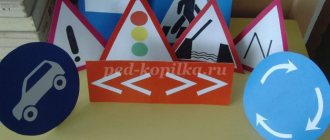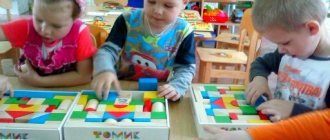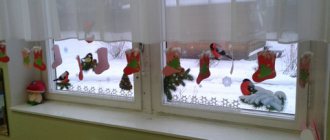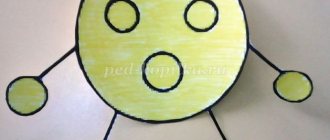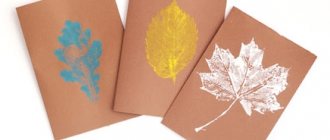Long-term planning for cognitive development (FEMP) in the first junior group (2–3 years old)
Olga Azimova
Long-term planning for cognitive development (FEMP) in the first junior group (2–3 years old)
Long-term planning for cognitive development (FEMP) in the first junior group (2 – 3 years old)
Planning was compiled in accordance with the program “From birth to school” edited by N. E. Veraksa, T. S. Komarova, M. A. Vasilyeva.
Used Books.
I. A. Pomoraeva “Formation of elementary mathematical concepts”, second group of early age.
month of September
Lesson 1
Subject:
"Ball in the Basket"
Program content:
Development of objective actions.
Develop mindfulness.
Cultivate perseverance.
Literature:
I. A. Pomoraeva s. 10 z. 1
Lesson 2
Subject:
"Ball in the Basket" (continued)
Program content:
Development of objective actions.
Develop thinking.
Cultivate interest in the game
Literature:
I. A. Pomoraeva s. 10 z. 2
Lesson 3
Subject:
"Wand-play"
Program content:
Development of objective actions.
Develop spatial orientation skills.
Cultivate a feeling of sympathy for each other.
Literature:
I. A. Pomoraeva s. 10 z. 3
Lesson 4
Subject:
“Wand-toy” (continued)
Program content:
Development of objective actions.
Develop curiosity.
Cultivate positive relationships with peers.
Literature:
I. A. Pomoraeva s. 10 z. 4
October month
Lesson 5
Subject:
“What rolls, what doesn’t roll”
Program content:
Formation of the ability to distinguish objects by shape and name them: cube, ball. Forming the ability to perform actions with objects: tracing the shape of an object, rolling it, placing it.
Develop analytical skills.
Cultivate volitional efforts.
Literature:
I. A. Pomoraeva s. 11 z. 1
Lesson 6
Subject:
“Hide the cube, hide the ball”
Program content:
Formation of the ability to distinguish objects by shape and name them: cube, ball. Forming the ability to perform actions with objects: trace the shape of an object with your palm, roll it, place it.
Develop the ability to compare.
Cultivate the desire to act purposefully.
Literature:
I. A. Pomoraeva s. 12 z. 2
Lesson 7
Subject:
"Find the same one"
Program content:
Formation of the ability to distinguish objects by shape and name them: brick, ball. Formation of the ability to perform actions with objects: stroke with the palm of your hand, roll, place, build simple buildings.
Develop the ability to relate.
Cultivate the desire to overcome difficulties.
Literature:
I. A. Pomoraeva s. 12 z. 3
Lesson 8
Subject:
“Building chairs for nesting dolls”
Program content:
Formation of the ability to distinguish objects by shape and name them: cube, ball. Developing the ability to construct simple buildings.
Develop grouping skills.
Cultivate the desire to see things through to the end.
Literature:
I. A. Pomoraeva s. 13 z. 4
Lesson 9
Subject:
"What's in the bag?"
Program content:
Formation of the ability to distinguish objects by shape and name them: cube, ball, brick.
Develop the ability to establish identity.
Cultivate discipline.
Literature:
I. A. Pomoraeva s. 14 z. 1
November month
Lesson 10
Subject:
“Gathering toys for a walk”
Program content:
Development of the ability to distinguish objects of contrasting sizes and designate them with words: large, small.
Develop the ability to establish the difference between homogeneous objects based on one of the sensory attributes.
Develop the ability to listen to a friend.
Literature:
I. A. Pomoraeva s. 15 z. 2
Lesson 11
Subject:
"Round dance of nesting dolls"
Program content:
Development of the ability to distinguish objects of contrasting sizes and designate them with words: large, small. Improving subject actions.
Develop attention and memory.
Develop the ability to listen to the teacher.
Literature:
I. A. Pomoraeva s. 15 z. 3
Lesson 12
Subject:
"Building turrets"
Program content:
Development of the ability to distinguish cubes of contrasting size and name them: large cubes, small cubes. Developing the ability to construct simple buildings.
Develop auditory attention.
Cultivate accuracy in completing tasks.
Literature:
I. A. Pomoraeva s. 16 z. 4
December month
Lesson 13
Subject:
"Let's roll the balls along the paths"
Program content:
Development of the ability to distinguish cubes of contrasting size and name them: large cubes, small cubes.
Improving subject actions.
Develop attention.
Cultivate patience.
Literature:
I. A. Pomoraeva s. 17 z. 1
Lesson 14
Subject:
"Toys for Dolls"
Program content:
Development of the ability to distinguish cubes and balls of contrasting sizes.
Formation of the ability to group objects by size.
Develop perception.
Cultivate perseverance.
Literature:
I. A. Pomoraeva s. 18 z. 2
Lesson 15
Subject:
"Game with nesting dolls"
Program content:
Development of the ability to form groups of homogeneous objects, to distinguish the number of objects: many - one.
Develop the ability to compare.
Foster a desire to play together.
Literature:
I. A. Pomoraeva s. 19 z. 3
Lesson 16
Subject:
“Collecting leaves in a vase”
Program content:
Development of the ability to form groups of homogeneous objects, to distinguish the number of objects: one - many.
Develop activity.
Cultivate goodwill.
Literature:
I. A. Pomoraeva s. 19 z. 4
Lesson 17
Subject:
"Playing with flags"
Program content:
Development of the ability to form groups of homogeneous objects, to distinguish the number of objects: many - many. Formation of the ability to use singular and plural nouns in speech.
Develop attention.
Develop listening skills.
Literature:
I. A. Pomoraeva s. 20 z. 1
January month
Lesson 18
Subject:
"Playing with snowballs"
Program content:
Development of the ability to distinguish objects of contrasting size and denote them with the appropriate words: large, small. Development of the ability to form groups of objects and distinguish their quantity: many - one, one - many.
Develop thinking.
Cultivate perseverance.
Literature:
I. A. Pomoraeva s. 21 z. 2
Lesson 19
Subject:
"Game with balls"
Program content:
Development of the ability to distinguish objects of contrasting size and denote them with the appropriate words: large, small. Developing the ability to form groups of objects and distinguish between their quantities: many - many.
Develop intelligence.
Develop the ability to listen to the teacher.
Literature:
I. A. Pomoraeva s. 22 z. 3
Lesson 20
Subject:
"We welcome guests"
Program content:
Development of the ability to form groups of homogeneous objects, distinguish them by quantity: many - few, few - many.
Develop logical thinking.
Cultivate accuracy while completing tasks.
Literature:
I. A. Pomoraeva s. 22 z. 4
February month
Lesson 21
Subject:
“Assembling a turret and a pyramid”
Program content:
Formation of the ability to distinguish objects by shape and name them: cube, ball. Development of the ability to distinguish the number of objects: one - many. Development of objective actions.
Develop attention.
Cultivate patience.
Literature
: I. A. Pomoraeva p. 23 z. 1
Lesson 22
Subject:
“Let’s give toys to the bunny and the bear”
Program content:
Formation of the ability to distinguish objects by shape and name them: cube, ball. Development of the ability to distinguish between the number of objects: many - many.
Develop observation skills.
Cultivate friendly relations in the team.
Literature:
I. A. Pomoraeva s. 24 z. 2
Lesson 23
Subject:
"Game with balls"
Program content:
Developing the ability to form groups of objects and distinguish between their quantities: many - many. Development of objective actions.
Develop curiosity.
Cultivate the desire to achieve your goal.
Literature:
I. A. Pomoraeva s. 25 z. 3
Lesson 24
Subject:
"Find a Pair"
Program content:
Development of the ability to form groups of homogeneous objects, distinguish their number and denote them with the words: many - one, one - many, many - many.
Develop fine motor skills.
Develop the ability to answer questions.
Literature:
I. A. Pomoraeva s. 25 z. 4
March
Lesson 25
Subject:
“Roll the ball into the house”
Program content:
Development of the ability to distinguish objects that are contrasting in size and shape, to form them into groups by quantity and to designate them in speech: large, small, cube, ball, many - many. Formation of the ability to produce the simplest groupings of objects by shape and size.
Develop logical thinking.
Cultivate perseverance.
Literature:
I. A. Pomoraeva s. 26 z. 1
Lesson 26
Subject:
“Building gates for balls”
Program content:
Formation of the ability to distinguish objects by shape and quantity and name them: cube, ball, brick, many - few. Developing the ability to construct simple buildings.
Develop memory and attention.
Foster independence.
Literature:
I. A. Pomoraeva s. 27 z. 2
month of April
Lesson 27
Subject:
“Collecting toys for a matryoshka doll”
Program content:
Formation of the ability to distinguish objects by shape and quantity and designate them in words: cube, ball, brick, many - few. Developing the ability to construct simple buildings.
Develop observation skills.
Foster a sense of teamwork.
Literature:
I. A. Pomoraeva s. 28 z. 3
Lesson 28
Subject:
“Let’s build sofas for dolls”
Program content:
Formation of the ability to distinguish objects by shape (cube, brick) and color. Developing the ability to distinguish and show parts of your body. Developing the ability to construct simple buildings.
Develop visual memory.
Cultivate perseverance.
Literature:
I. A. Pomoraeva s. 29 z. 4
Lesson 29
Subject:
"Gifts for Hedgehogs"
Program content:
Formation of the ability to distinguish objects by size and color. Development of objective actions.
Develop the ability to group objects according to common characteristics.
Develop the ability to listen to the teacher.
Literature:
I. A. Pomoraeva s. 30 z. 1
Lesson 30
Subject:
“Where are the toys hidden?”
Program content:
Development of the ability to hear and name spatial prepositions and adverbs, correlate them with the location of a specific object (in, on, under, here, there, here).
Develop spatial concepts.
Foster independence.
Literature:
I. A. Pomoraeva s. 32 z. 2
Lesson 31
Subject:
"Train Travel"
Program content:
Development of the ability to form groups of homogeneous objects, distinguish their quantity and denote them with appropriate words: many - one, one - many, many - few, many - many.
Develop memory and attention.
Foster a sense of teamwork.
Literature:
I. A. Pomoraeva s. 32 z. 3
month of May
Lesson 32
Subject:
"We are sailing on a boat"
Program content:
Development of the ability to distinguish between the number of objects: (many - one, use singular and plural nouns in speech.
Develop the ability to follow an adult in a certain direction.
Cultivate interest in the environment.
Literature:
I. A. Pomoraeva s. 33 z. 4
Lesson 33
Subject:
“Laying out, shifting, collecting”
Program content:
Development of the ability to form groups of homogeneous objects, distinguish their quantity and denote them with appropriate words: many - one, one - many, many - few, many - many.
Develop auditory memory.
Cultivate perseverance.
Literature:
I. A. Pomoraeva s. 34 z. 1
Lesson 34
Subject:
“We make Easter cakes big and small”
Program content:
Formation of the ability to distinguish objects by size and designate them with words: large, small. Development of objective actions.
Develop curiosity.
Cultivate patience.
Literature:
I. A. Pomoraeva s. 35 z. 2
Thank you for your attention.
I wish you creative discoveries and success in your work!
